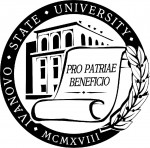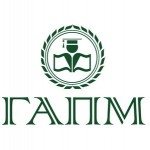The expansion of the EU-approaches to providing the partner-countries higher education quality assurance Expanding Quality Assurance
The Russian Federation national report
3 project participants conducted the research:
 |
Ivanovo State University |
 |
Pastukhov Academy |
 |
Tomsk State University |
32 respondents from 23 HEIs have been interviewed. The interview has been conducted in 15 regions of the Russian Federation (Transbaikal and Krasnoyarsk Territories, Ivanovo, Irkutsk, Kemerovo, Novosibirsk, Omsk, Orel, Saratov, Sverdlovsk, Tomsk and Yaroslavl regions, Republic of Bashkortostan, Moscow, and Saint-Petersburg).
Key findings of the research
The respondent demonstrated an inconsistent approach to understanding quality as ability of an institution to achieve its goals:
- Only 39 out of 145 criteria of the quality of education (see section 2) that equal to 27% are associated with achieving goals, while the rest of the criteria forms (67 references, 46%) or describes a desirable operational climate (18 references, 12,4%). The remaining 21 references (14, 5%) are indirectly related to the quality of education or not related to it at all.
- Instruments for measurement of the quality of education are hardly ever used (see section 4.3);
- The EQAVET descriptors insufficiently characterize achieving the goals that have been previously set;
- The analysis of the application of different indicators of the quality of education activities (see section 6) reveals that the respondents rated lower the application of the indicators which are related to interests, level, and interaction with students. The indicators reflecting the quality of development and realization of curricula as well as the recognition of academic results are rated a bit higher. The indicators reflecting structure of the teaching staff and the work performed by the staff are rated quite high. And the application of indicators reflecting different aspects of management of an educational organization got the highest rating.
Some respondents indicated the lack of time and resources for analysis to be a cause of problems with analysis and evaluation that correlates with the conclusion made about the implementation of the descriptors within CQAF VET model.
We also may state a relatively weak focus on the relevant needs/demands, supposedly because of indicators of the labor markets needs which are not transparent enough.
Another bottleneck which has been mentioned is the deficiency of time and resources for providing the high-quality education.
The main challenges associated with the involvement of teaching staff and the necessary measures of support refer to the conformity of the teaching staff qualification. The other significant group of challenges refers to managing the learning process and education institution as a whole, especially to the quality management.
The respondents put a greater emphasize on the government support to educational organizations as a whole as well as to individuals (teachers and trainers). They highlight the necessity to support cooperation with employers and partners.
The respondents wish to get informational – methodological as well as regulatory – methodological support via a professional development system. They are interested in being more involved in the management processes in their educational organizations.
The respondents suggest evaluating the quality of teaching with no regard to the quality of management of an educational organization, thinking that even poor managed organizations may provide the high- quality teaching.
None of the respondents indicated that improvement of the quality of education quality is possible to achieve if the following conditions are met:
- understanding the customers’ requirements,
- setting the goals based on these requirements,
- managing the goal achievement at all levels including the executant level with a result-based payment.
Thus, along with Russian specificity discovered within the project, it is worthwhile to put a greater emphasize on the understanding of the customers’ requirements, setting the goals, and managing the education organization relying on the quality principles.